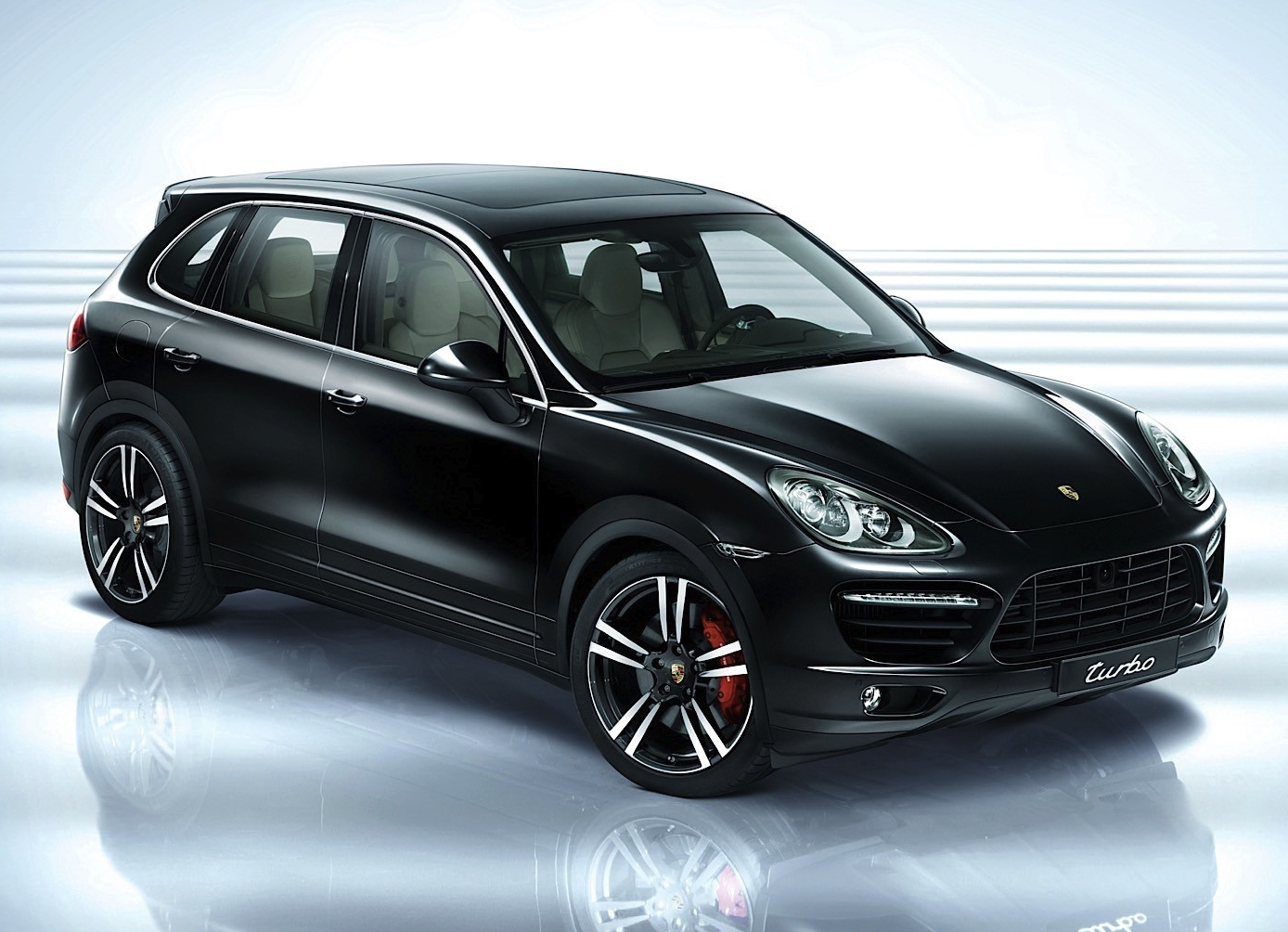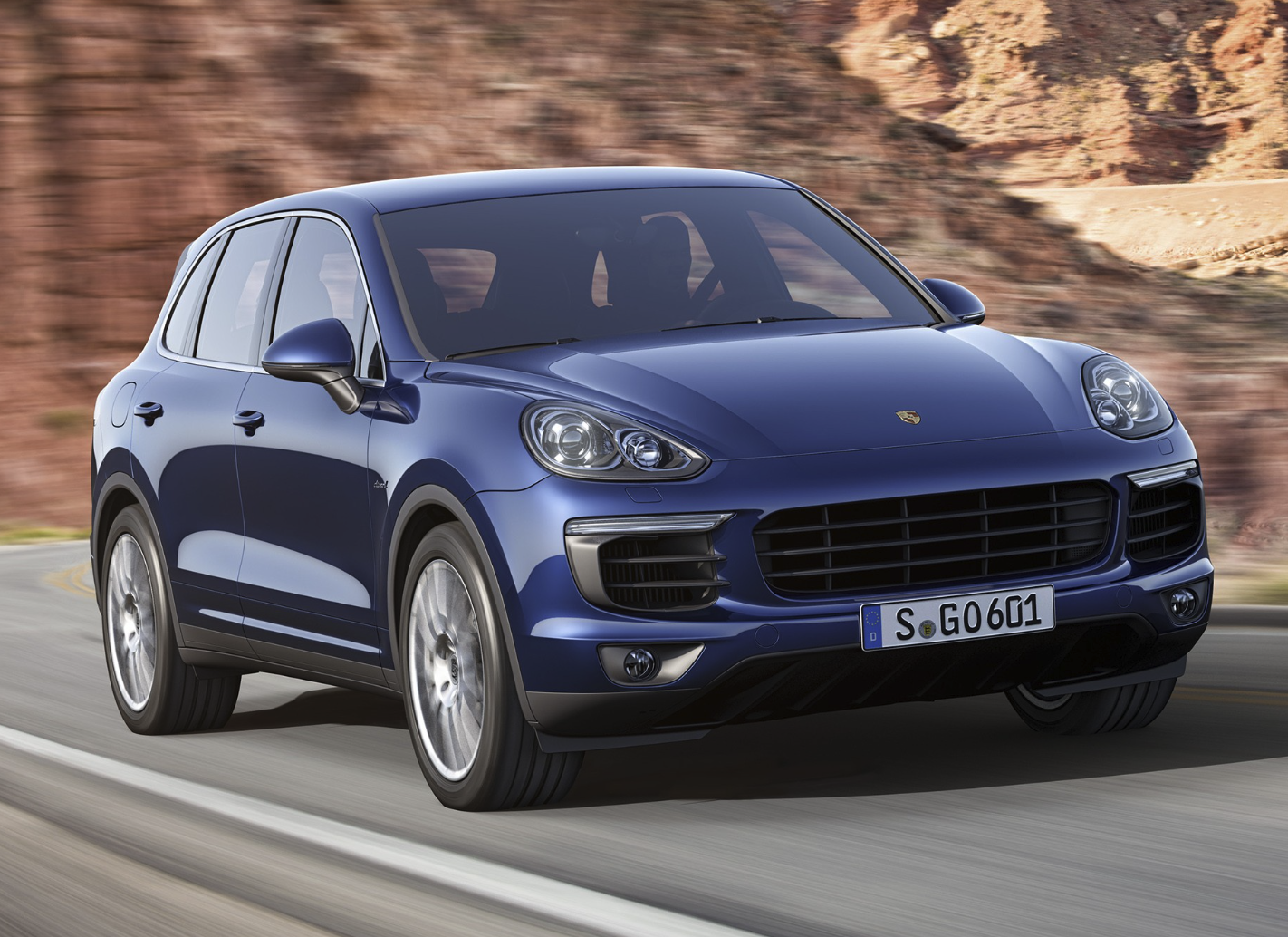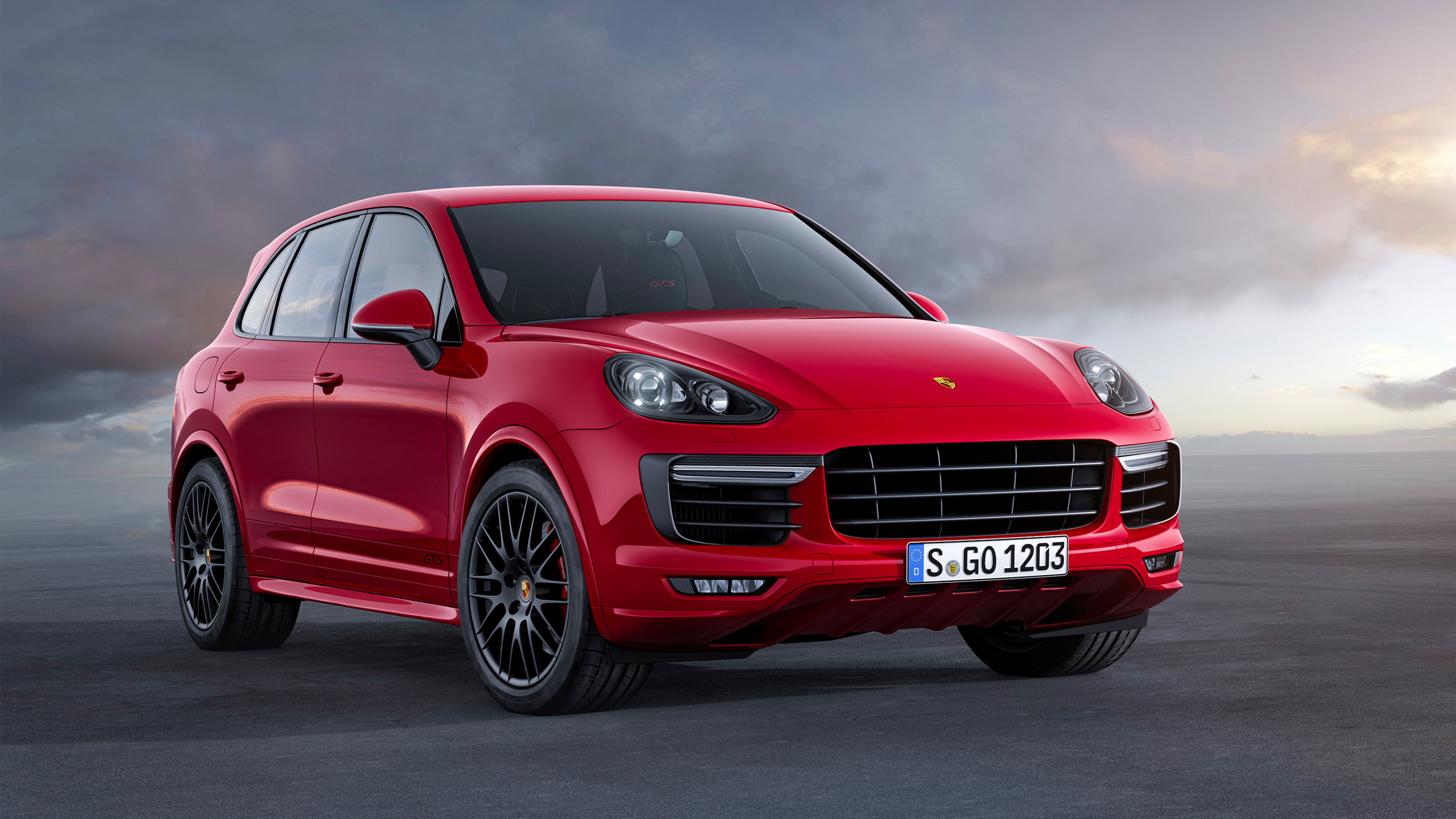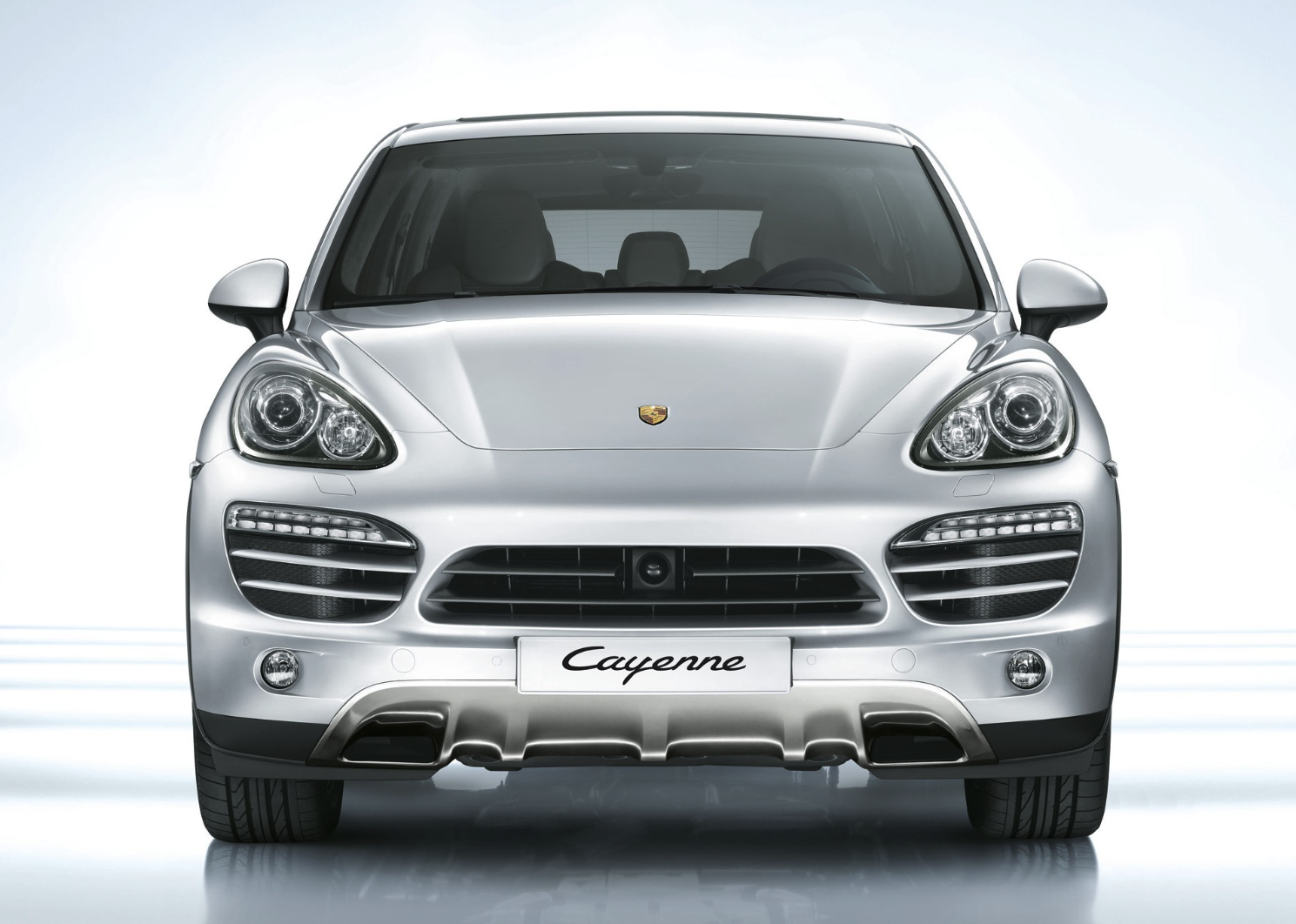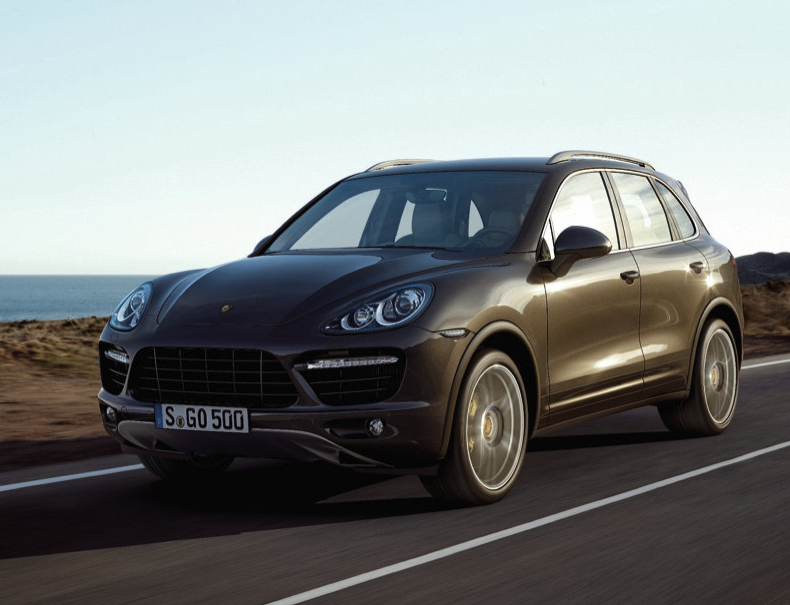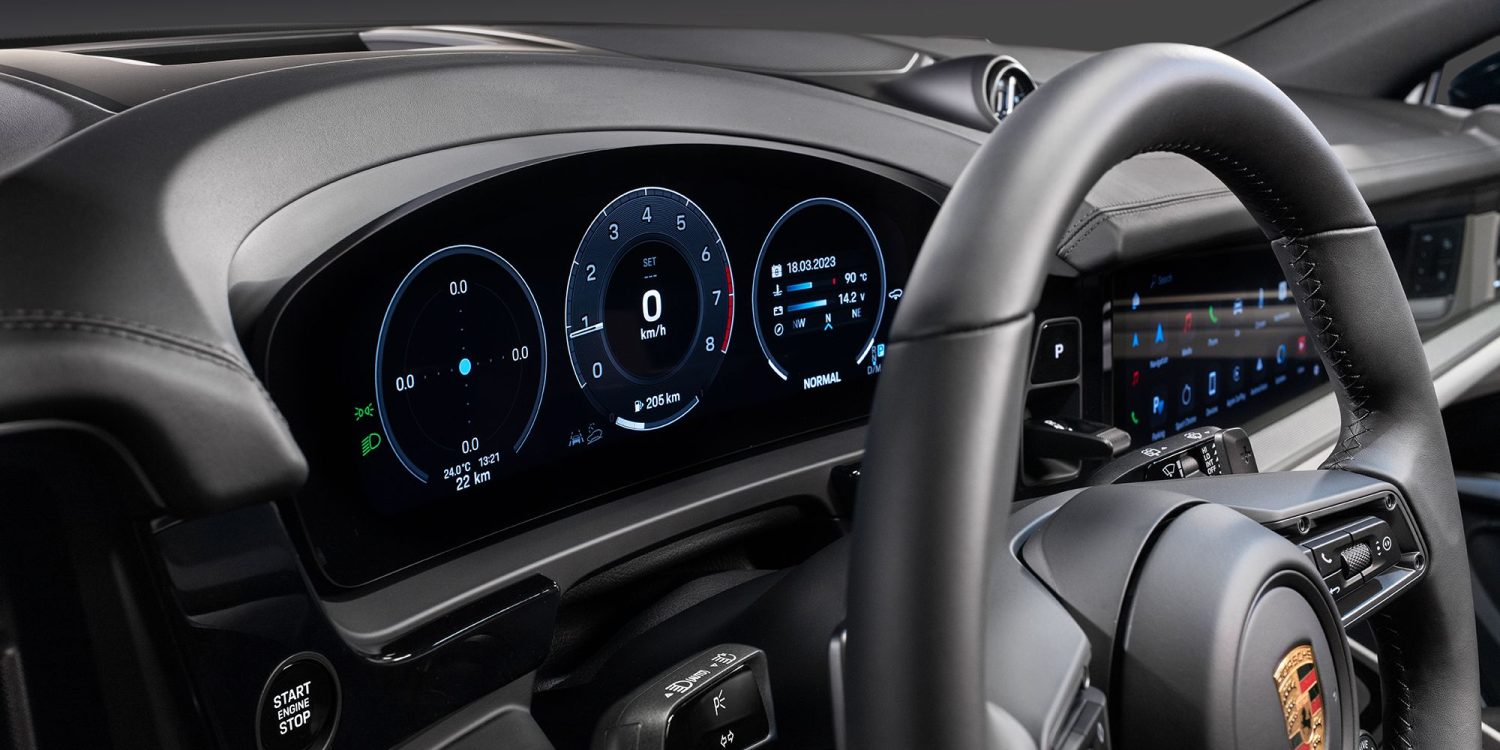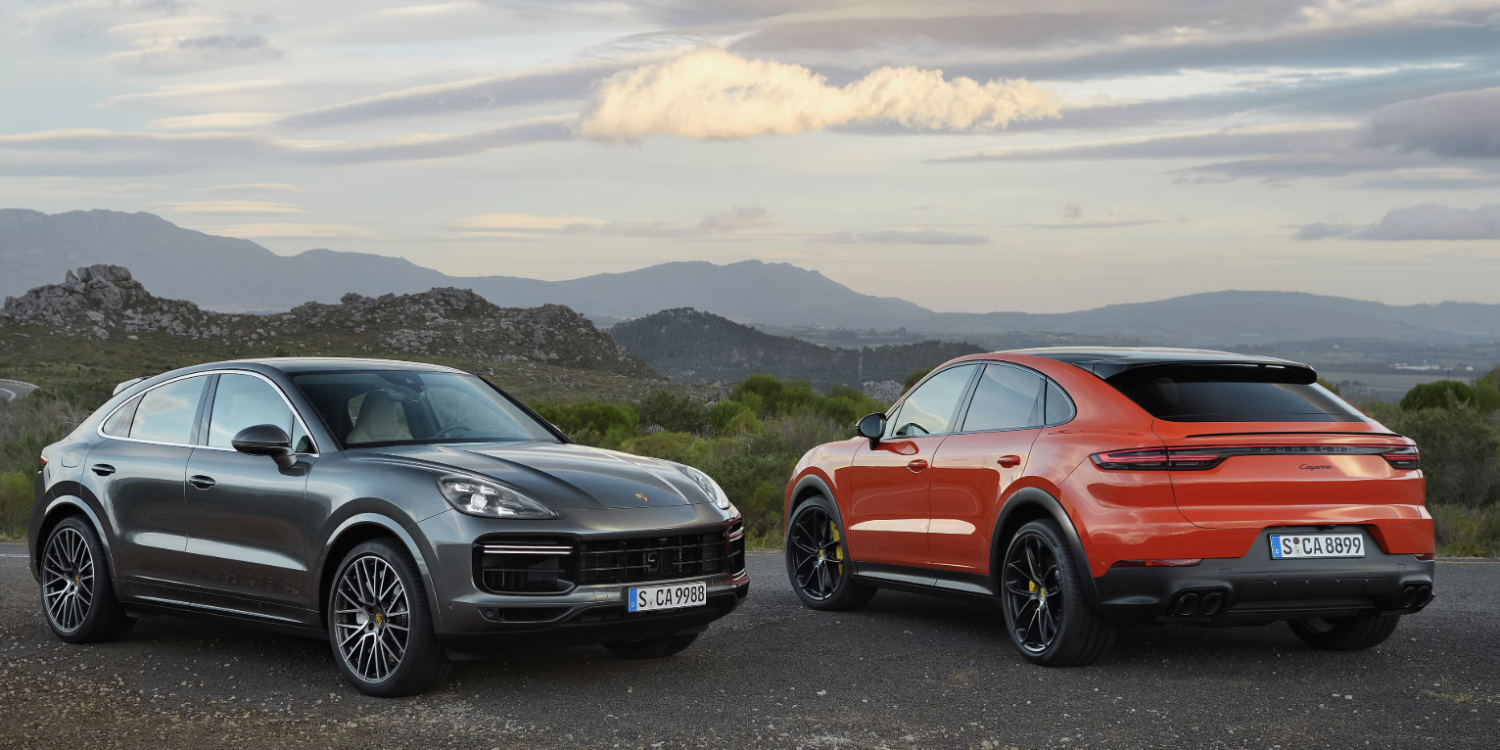2nd Generation Porsche Cayenne Buyer's Guide
Buying a second generation Cayenne? Our Guide Covers Key Models, Potential Issues, Values, Tips & More.
The second-generation Porsche Cayenne (958, 2011–2018) marked a major leap forward for Porsche’s flagship SUV. Lighter, sleeker, and more refined than its predecessor, the 958 Cayenne combined real-world practicality with unmistakable Porsche DNA. It introduced a sharper, more cohesive design language, improved driving dynamics, better fuel efficiency, and a more upscale interior—while continuing to offer serious performance across the model range. Whether you're looking for a capable daily driver or a high-performance luxury SUV, the 958 generation has a lot to offer.
From the efficient and accessible Cayenne V6 and Diesel, to the powerful and popular Cayenne S, and all the way up to the thrilling Cayenne GTS, Turbo, and Turbo S, the 958 lineup offers something for every driver. And for the eco-conscious performance enthusiast, the Cayenne S Hybrid and later S E-Hybrid models added plug-in capability without sacrificing Porsche character. Of particular note is the Cayenne GTS, which gained widespread acclaim for its naturally aspirated V8 in early 958.1 models and aggressive styling—a favorite among enthusiasts for its blend of performance and usability.
In this in-depth Second-Generation Porsche Cayenne Buyer’s Guide, we’ll walk you through key model differences, known issues, market values, and ownership expectations. We’ll also cover the best options to look for, expert buying tips, and which models offer the best driving experience and long-term value. Whether you're hunting for a well-optioned family hauler or a future classic with a Porsche badge, the 958 Cayenne represents a sweet spot in the modern luxury SUV market.
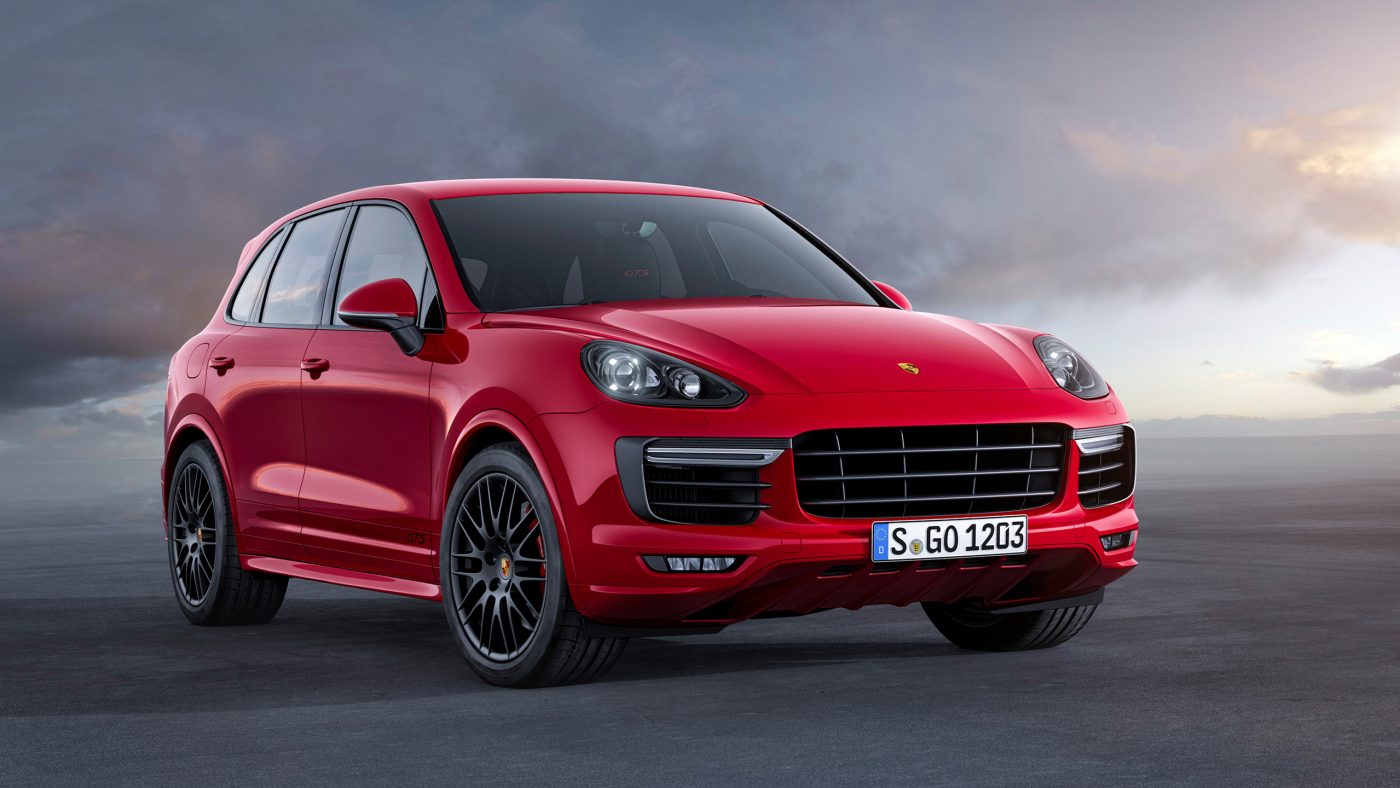
Why the 2nd Gen Porsche Cayenne is a Unique Classic to Buy
The second-generation Porsche Cayenne (958, 2011–2018) is a standout in the luxury SUV world for a simple reason: it delivers true Porsche performance in a package that's also practical, refined, and livable every day. Building on the success of the first-generation model, the 958 refined nearly every aspect of the Cayenne formula—offering more power, less weight, better handling, and a more sophisticated interior. It's one of the few luxury SUVs from the 2010s that doesn't just look fast—it feels it, whether you're cruising on the highway or carving through a mountain road.
One of the most unique aspects of the 958 Cayenne is its diverse model lineup. From the efficient and affordable base V6 and Diesel models to the muscle of the Cayenne S and GTS, and the supercar-challenging Turbo and Turbo S, there's truly something for every kind of driver. The early 958.1 GTS, with its naturally aspirated 4.8L V8, has become an enthusiast favorite for its throatier sound and more traditional feel. Meanwhile, the 958.2 Turbo S pushes over 560 horsepower, offering sports-car-like acceleration in an SUV shell. There’s even the S Hybrid and S E-Hybrid for those seeking a blend of performance and environmental consciousness.
What makes the 958 generation particularly compelling is its balance of performance and luxury. Inside, you get an interior that feels truly premium—with materials and ergonomics that rival anything in the segment. At the same time, the chassis tuning, steering feel, and available PASM or air suspension systems give the Cayenne handling characteristics that defy its size. It’s an SUV that can handle the school run, a weekend road trip, and still feel rewarding behind the wheel—a rare combination in this class.
For buyers looking for a premium SUV that doesn’t sacrifice driver engagement, the 958 Cayenne remains one of the best choices on the used market today. It offers strong long-term value, broad availability, and Porsche-level quality—especially when properly maintained. Whether you want refinement, performance, versatility, or all of the above, the second-gen Cayenne delivers in a way that few others can, making it not just a great SUV, but a truly Porsche-worthy one.
2nd Gen Cayenne Variants - A Quick Primer for Potential Buyers On The Variants & Specials To Think About.
We already have ultimate guide to the Porsche Cayenne (958) so we don't want to repeat everything here. Instead, we will give you a quick primer and summary about the main second generation Cayenne variants, some of the core model year changes and we will talk about some special editions worth noting as you think about your potential purchase.
Key Variants & Differences
The second-generation Porsche Cayenne (958, 2011–2018) introduced a more refined, lighter, and more versatile platform, with a wide range of trims and powertrains to suit a variety of driving styles and budgets.
The 958 was split into two major sub-generations: 958.1 (2011–2014) and the facelifted 958.2 (2015–2018). Each offered its own unique touches, performance upgrades, and technology improvements. Understanding the key variants and differences is essential for buyers looking to choose the right Cayenne for their needs.
Cayenne (Base V6)
The entry-level Cayenne came with a 3.6L naturally aspirated V6 making 300 hp. While not a performance SUV by Porsche standards, it was solid, reliable, and relatively fuel-efficient.
This model uses a traditional 8-speed automatic transmission and AWD, and it’s well-suited for buyers who want Porsche quality and comfort without the performance premium.
Cayenne Diesel
Offered from 2013 to 2016, the Cayenne Diesel featured a 3.0L V6 turbo diesel sourced from Audi, delivering 240 hp and 406 lb-ft of torque. While not quick, it had excellent low-end grunt and long-range fuel economy.
However, the Dieselgate scandal eventually led to its discontinuation, and buyers should verify any software updates or emissions compliance if shopping for one.
Cayenne S
The Cayenne S is the performance sweet spot for many. The 958.1 (2011–2014) Cayenne S used a 4.8L naturally aspirated V8 producing 400 hp, while the 958.2 (2015–2018) switched to a 3.6L twin-turbocharged V6 making 420 hp.
The 958.1 V8 version is beloved for its character and sound, while the later twin-turbo V6 offers improved efficiency and torque. Both variants provide strong acceleration and a balanced ride.
Cayenne GTS
The GTS is the enthusiast’s choice. The 958.1 GTS (2013–2014) came with the same 4.8L V8 as the Cayenne S but tuned to 420 hp, along with a lowered sport suspension, more aggressive styling, and standard PASM.
In 958.2 (2015–2018), the GTS adopted the twin-turbo V6 with 440 hp, improving torque and efficiency. Both are fast, sharp-handling SUVs, with the 958.1 version prized by purists for its naturally aspirated engine and visceral feel.
Cayenne Turbo & Turbo S
At the top of the range, the Cayenne Turbo models deliver true sports car performance. The 958.1 Turbo used a 4.8L twin-turbo V8 producing 500 hp, while the 958.2 Turbo increased that to 520 hp, and the Turbo S topped the range with 550–570 hp, depending on the year.
These models featured air suspension, PASM, torque vectoring, and a host of luxury options as standard. They are fast, composed, and incredibly capable in any setting.
Cayenne S Hybrid / S E-Hybrid
Porsche also offered hybrid variants during the 958 generation. The Cayenne S Hybrid (2011–2014) combined a supercharged 3.0L V6 with an electric motor for a combined 380 hp, while the S E-Hybrid (2015–2018) added plug-in capability and a more advanced electric drive system, with 416 combined hp.
These offer a unique blend of performance and efficiency, though they’re heavier and more complex, making maintenance history important.
Key Differences Between 958.1 and 958.2:
Styling: 958.2 models got updated front/rear bumpers, LED lighting, and sleeker overall design.
Powertrains: The V8s in S and GTS were replaced with twin-turbo V6s for better efficiency in 958.2.
Infotainment & Features: 958.2 models introduced updated PCM (Porsche Communication Management) systems with improved touchscreen functionality and more connectivity features.
Efficiency: Across the board, 958.2 models are more fuel efficient and cleaner, meeting newer emissions standards.
For buyers seeking character and classic V8 sound, 958.1 V8 models (especially the GTS and S) are becoming modern classics.
Those looking for newer tech, efficiency, and sharper torque response will prefer 958.2 Turbo or GTS variants. Regardless of the trim, the 958 Cayenne lineup offers true Porsche dynamics in an SUV body, with a variant tailored to nearly every kind of driver—from eco-conscious commuter to full-on performance enthusiast.
Model Year Changes (2011-2018)
The second-generation Cayenne (958, 2011–2018) represents one of the brand’s most refined evolutions—marked by a significant facelift, mechanical updates, and a broader powertrain lineup than ever before. The model is divided into two distinct sub-generations: the 958.1 (2011–2014) and the 958.2 facelift (2015–2018). While both are built on the same fundamental platform, there are key year-by-year changes that affect performance, features, and long-term desirability. Here's a breakdown of what changed and when:
2011 – The Launch of 958.1
The second-gen Cayenne debuted in 2011 with a full redesign. It was lighter, more efficient, and more refined than the outgoing 955/957 generation. Key updates included:
A weight reduction of up to 400 lbs thanks to increased aluminum use.
A more upscale interior design inspired by the Panamera, featuring a rising center console and higher-quality materials.
An 8-speed Tiptronic S automatic became standard across the range.
The model range included the Cayenne (V6), Cayenne S (4.8L V8), and Cayenne Turbo (4.8L twin-turbo V8).
2012 – Hybrid Debut
In 2012, Porsche added the Cayenne S Hybrid, pairing a 3.0L supercharged V6 with an electric motor to produce 380 hp. It offered improved fuel economy while maintaining respectable performance. The hybrid introduced regenerative braking and a more complex drivetrain, appealing to early eco-conscious buyers.
2013 – Cayenne Diesel Arrives
The Cayenne Diesel launched in North America in 2013, featuring a 3.0L turbo-diesel V6 with 240 hp and 406 lb-ft of torque. It became a favorite for long-distance drivers thanks to its torque and fuel economy. At the same time, Porsche introduced the Cayenne GTS—featuring a 420 hp naturally aspirated 4.8L V8, sport-tuned suspension, aggressive bodywork, and standard PASM. This model quickly became a favorite among enthusiasts.
2014 – Final Year of 958.1
The 2014 model year marked the end of the first phase of the 958 generation. It was the last year for the naturally aspirated V8 in the Cayenne S and GTS. These models are now increasingly appreciated for their analog character and sound. No major changes were made this year, but it’s a turning point for those who prefer the more “classic” Cayenne experience.
2015 – Facelift to 958.2
The 2015 refresh (958.2) brought significant design and mechanical updates:
Revised front and rear styling, including new LED daytime running lights, more angular headlights, and a sharper rear profile.
The Cayenne S switched from a V8 to a 3.6L twin-turbo V6 making 420 hp.
The GTS adopted the same twin-turbo V6, tuned to 440 hp, with improved torque and better fuel economy.
The Cayenne S E-Hybrid replaced the earlier hybrid with plug-in capability, a lithium-ion battery, and 416 combined hp.
The interior received a new PCM (Porsche Communication Management) system with better connectivity and touch controls.
2016 – Turbo S and Trim Enhancements
In 2016, Porsche brought back the Cayenne Turbo S, now pushing 570 hp and capable of 0–60 in just 3.8 seconds—supercar territory in an SUV. It came fully loaded with features like ceramic brakes, PDCC (Porsche Dynamic Chassis Control), and top-tier interior trim. Other trims saw optional enhancements, including lane-keeping assist, adaptive cruise control, and improved infotainment options.
2017–2018 – Final Model Years
The final two years of the 958.2 generation saw relatively minor updates. Porsche added more standard equipment, improved the PCM system with Apple CarPlay, and expanded safety features. The Cayenne Platinum Edition also appeared, offering popular options and unique styling cues at a bundled value. These years are often considered the most refined and reliable of the 958 generation, offering the best tech and efficiency.
The second-gen Porsche Cayenne (958) matured impressively across its lifespan. If you want naturally aspirated V8 character and classic Porsche feel, the 2011–2014 Cayenne S or GTS are your best bet. For newer tech, efficiency, and sharper performance, look to 2015–2018 models, especially the Turbo, GTS, or S E-Hybrid. Every year brought something new to the table, making the 958 generation one of Porsche’s most versatile and compelling SUVs to date.

Second Generation Porsche Cayenne Market Value & Pricing
The second-generation Porsche Cayenne (958, 2011–2018) has proven to be a strong value in the premium SUV market, offering a wide range of pricing depending on model, year, mileage, and condition. As of now, early 958.1 models (2011–2014)—particularly base V6 and Diesel variants—can be found in the $12,000 to $25,000 range, depending on maintenance history and mileage. Cayenne S and GTS models from the same era, especially those with the naturally aspirated V8, typically command $18,000 to $35,000, with clean, low-mile examples reaching higher.
The facelifted 958.2 models (2015–2018) tend to carry a premium for their updated styling, tech, and efficiency. S and GTS trims from these years generally fall between $30,000 and $50,000, while Cayenne Turbo and Turbo S models—particularly well-optioned examples—can range from $40,000 to $70,000+ depending on condition and mileage. Hybrid and S E-Hybrid models vary widely, from $20,000 for early examples to $40,000+ for later plug-in hybrids. Overall, the 958 Cayenne strikes an excellent balance between performance, luxury, and long-term value—especially when well-maintained and optioned with desirable features.
Factors That Affect Value
Several key factors influence the market value of a second-generation Porsche Cayenne (958, 2011–2018), and understanding them is crucial whether you're buying, selling, or simply evaluating a potential investment. While all 958 models offer a blend of performance and utility, certain trims, specs, and conditions will command significantly more on the used market. Here's an expert breakdown of the main factors affecting 958 Cayenne values:
1. Model & Trim Level
The most obvious factor is the variant—base Cayenne models are the most affordable, while GTS, Turbo, and Turbo S versions command premiums for their performance, exclusivity, and features. Enthusiast-favorite trims like the 958.1 GTS with a naturally aspirated V8, or high-output models like the Turbo S, consistently sit at the top of the value spectrum. On the other end, V6 and Diesel variants tend to be more affordable due to lower performance and higher production volume.
2. Sub-Generation: 958.1 vs. 958.2
The 958 is split into pre-facelift (958.1, 2011–2014) and post-facelift (958.2, 2015–2018). The latter carries a premium due to updated styling, more efficient engines (like the twin-turbo V6 replacing the V8 in the Cayenne S), improved infotainment (PCM), and modernized features like Apple CarPlay. However, collectors and purists increasingly value the 958.1 GTS for its last-of-the-line naturally aspirated Porsche V8—adding future collectibility to that specific model.
3. Mileage & Condition
As with any luxury vehicle, lower mileage examples in excellent condition demand significantly more. A high-mileage Turbo or GTS with deferred maintenance won’t command nearly the same price as a well-preserved, documented example. Clean interiors, paint condition, serviceable brakes and suspension, and no warning lights or drivetrain issues are all big value factors.
4. Service Records & Maintenance History
Porsche buyers tend to be well-informed, and documented maintenance is key. A 958 with full dealer or specialist service records is far more desirable than one with a spotty or unknown history. Timely oil changes, regular brake service, coolant flushes, transfer case maintenance, and updated software (especially for hybrids and diesels) all boost buyer confidence and resale value.
5. Options & Features
Porsche’s à la carte options structure means two Cayennes with the same trim can vary wildly in value. Desirable extras include things like Air suspension with PASM, Sport Chrono package, Premium or Burmester sound, Ventilated/heated seats and panoramic sunroof
6. Transmission & Drivetrain Health
Although the 958 came only with an automatic transmission, issues with the transfer case—particularly in 958.2 models—can impact value. If there's hesitation, jerking, or binding at low speeds, that’s a red flag. Buyers are increasingly aware of this, and cars with recent transfer case service or replacement are more appealing.
7. Special Editions or Rare Specs
Limited-run trims like the Platinum Edition, Diesel Titanium Edition, or special-order paint/interior combos can add uniqueness and value. Likewise, Paint-to-Sample (PTS) or well-optioned color schemes with sport interiors attract enthusiast attention.
What You'll Pay
Buyers will find a wide range of pricing that reflects the SUV’s broad trim lineup, performance variants, and how well the vehicle has been maintained over time.
These vehicles have depreciated significantly from their original MSRPs—which ranged from the $50,000s to over $150,000—but pricing today is heavily influenced by model, mileage, condition, and service history.
At the entry level, base V6 Cayennes (958.1, 2011–2014) with higher mileage and basic options can be found in the $12,000–$18,000 range. These are typically vehicles with over 100,000 miles and may come with some cosmetic wear or deferred maintenance.
A well-maintained base V6 with lower mileage and more options (such as air suspension or panoramic roof) can fetch closer to $20,000–$25,000. The Cayenne Diesel, offered between 2013 and 2016, tends to hold slightly better value due to its torque-rich driving experience and excellent fuel economy. Expect to pay $18,000–$28,000, depending on condition and mileage, though Dieselgate-related concerns can sometimes affect price.
Moving up the ladder, the Cayenne S splits pricing based on engine generation. The 958.1 Cayenne S, powered by a naturally aspirated 4.8L V8, is generally priced between $20,000 and $30,000, with better examples creeping higher.
The 958.2 S, with the newer 3.6L twin-turbo V6, typically runs $25,000 to $35,000, thanks to its improved efficiency, newer styling, and refined PCM infotainment system. These represent a solid middle ground in terms of performance, luxury, and long-term reliability—especially if maintenance is up to date.
The Cayenne GTS and Turbo models command a significant premium due to their performance and enthusiast appeal. A 958.1 GTS (2013–2014) with the 4.8L V8 is highly sought after and ranges from $30,000 to $45,000, especially if it has desirable options and mileage under 80,000.
The 958.2 GTS (2015–2018), with a twin-turbo V6 and improved tech, runs between $40,000 and $55,000, with mint-condition, low-mile examples pushing even higher.
The Turbo models, particularly 958.2 variants with 520 hp or the range-topping Turbo S with up to 570 hp, range from $45,000 on the low end (for higher-mile, older examples) to $65,000–$80,000+ for newer, well-optioned, low-mile units.
The Turbo S, in particular, is becoming a modern collectible among high-performance SUV fans.
For buyers interested in the Cayenne S E-Hybrid, pricing ranges from $25,000 to $40,000, depending on battery health, mileage, and model year. These offer a unique combination of plug-in efficiency and Porsche handling, but maintenance and complexity can keep values a bit lower than the equivalent GTS or S.
In short, buyers should expect to pay anywhere from $15,000 to $80,000+ for a 958 Cayenne depending on variant, options, and condition.
The sweet spot for most enthusiasts lies in the $30,000 to $50,000 range, where GTS and Turbo models offer outstanding performance and luxury with Porsche pedigree. Just be sure to prioritize service history, options, and a clean PPI (pre-purchase inspection) to ensure you're getting the right value for your money.
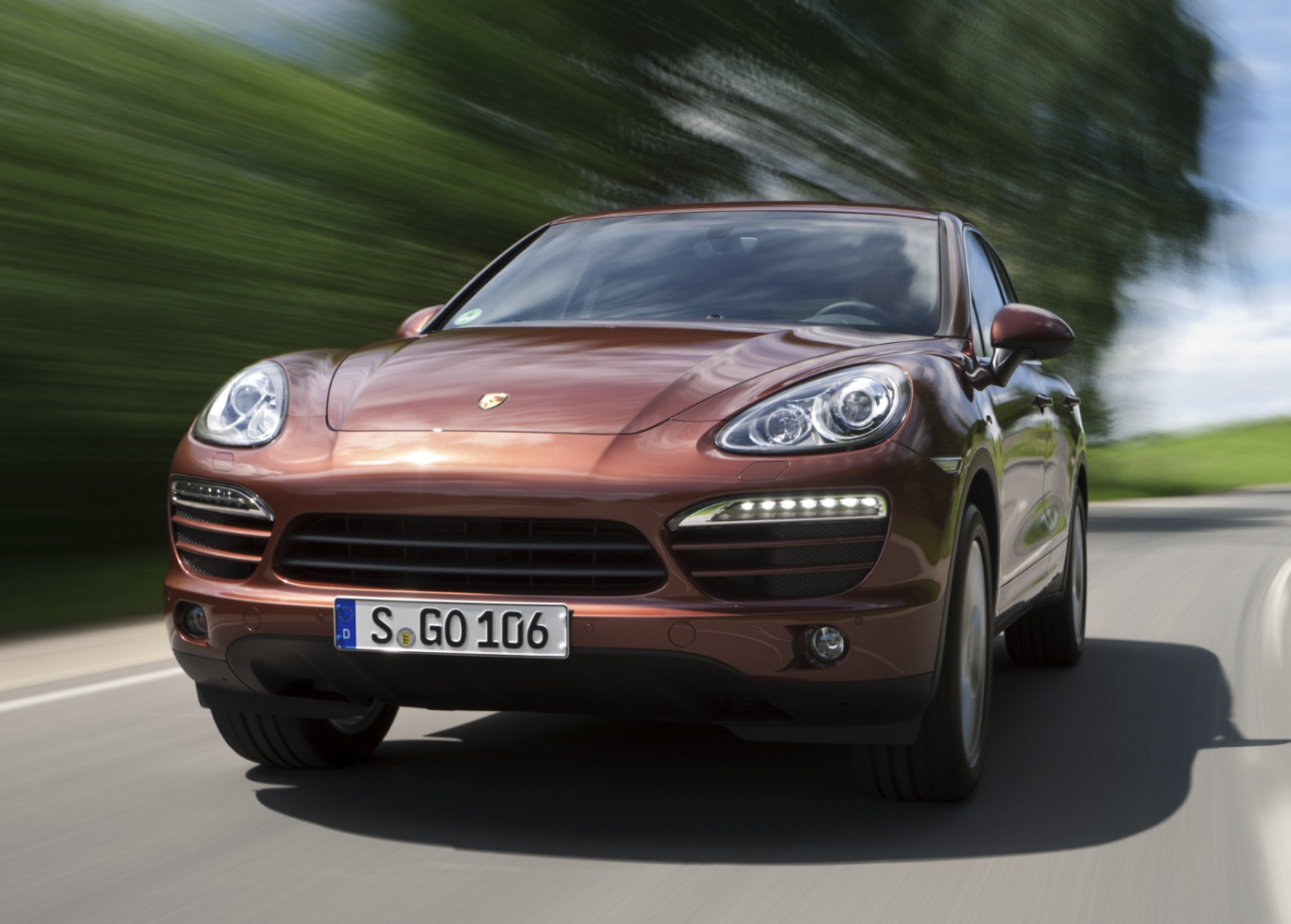
2nd Gen Cayenne Driving Experience & What to Expect
What They Said at The Time
When the second-generation Porsche Cayenne (958) was introduced in 2010 (as a 2011 model), the media responded with a mix of admiration and respect—particularly for how Porsche managed to elevate the performance SUV formula without compromising practicality or luxury. The redesigned Cayenne was not just a mid-cycle refresh; it was a complete reengineering, featuring a lighter chassis, improved fuel economy, more refined styling, and a cabin worthy of Porsche’s sports car lineage. Journalists were quick to notice that this wasn’t simply a better Cayenne—it was a benchmark for performance SUVs going forward.
Car and Driver, in its first full review of the 2011 Cayenne, wrote:
“It’s hard to overstate how well this SUV drives. There’s no doubt it’s the driver’s choice in this segment.”
They praised the reduced weight, sharper handling, and improved steering feel, noting that it drove “smaller and more confidently” than its predecessor. The publication also highlighted the dramatic transformation in interior quality, calling it “a true luxury space that finally feels up to Porsche standards.”
Motor Trend echoed similar sentiments in its comparison tests, particularly impressed by how the Cayenne managed to feel athletic without sacrificing comfort. When testing the Cayenne Turbo, they described it as “ferociously fast yet entirely composed,” noting that the acceleration figures were staggering for a vehicle of its size. They concluded that the Cayenne had “redefined what performance SUVs should aspire to be”, cementing its position as the leader in the segment. Even Top Gear, which had previously criticized the concept of a Porsche SUV, admitted that the 958 was something special. In their road test of the Cayenne Diesel and later the GTS, they remarked,
“It’s still ridiculous that something this big can handle like this... but that’s what makes it so compelling. Porsche didn’t just make a fast SUV—they made a Porsche that happens to be an SUV.”
Across the board, journalists were struck by how the 958 Cayenne moved the needle—not only for Porsche but for the industry as a whole. It wasn't just praised for performance either: its improved fuel efficiency (especially with diesel and hybrid variants), better infotainment, and more comfortable ride all contributed to making it one of the most well-rounded luxury SUVs of its time. Even a decade later, many of those early reviews hold up—highlighting just how well the 958 Cayenne was conceived and executed.
What to Expect Today
The second-generation Porsche Cayenne (958) offers a driving experience that is remarkably refined, versatile, and unexpectedly sporty for a mid-size luxury SUV. Whether you're behind the wheel of a base model or a Turbo S, one of the most impressive qualities of the 958 is how it blends Porsche’s sports car DNA with genuine everyday usability. While many luxury SUVs lean toward softness or numbness in favor of comfort, the 958 Cayenne feels balanced, controlled, and deeply composed—even when pushed hard.
In terms of handling, the Cayenne feels tighter and more agile than its size would suggest. Thanks to a well-engineered chassis, accurate steering, and options like Porsche Active Suspension Management (PASM) and air suspension, the Cayenne corners with confidence and maintains impressive poise. The GTS and Turbo variants, in particular, are tuned for more spirited driving and offer flatter cornering and sharper throttle response. With standard all-wheel drive, the Cayenne also delivers superb grip and stability in all weather conditions, making it a year-round performer.
Performance varies significantly by model, but all versions offer competent power. The base V6 is adequate for daily use, offering smooth acceleration and highway cruising ability, though it won’t excite. The Cayenne S and GTS models up the ante with either a naturally aspirated V8 (in the early 958.1 models) or a twin-turbo V6 (in 958.2), delivering strong mid-range power and satisfying soundtracks. The Turbo and Turbo S models, however, are in a different league altogether—delivering 0–60 mph in under 4 seconds in Turbo S form and rivaling some modern sports cars in outright pace. For those seeking efficiency without sacrificing Porsche feel, the Diesel and Hybrid variants offer great torque and smooth operation, making them ideal long-distance cruisers.
As a daily driver, the 958 Cayenne is exceptional. The ride is comfortable yet controlled, road noise is minimal, and the cabin is quiet and well-insulated. There’s ample room for passengers and cargo, high-quality materials throughout, and an intuitive layout—especially in the updated 958.2 with its improved infotainment. Parking and city driving are relatively stress-free, and the SUV is just as at home in a crowded urban setting as it is on a long stretch of autobahn. As a weekend cruiser, it offers real driving engagement, making backroads genuinely fun and rewarding in a way most luxury SUVs simply aren't.
For potential buyers, the 958 Cayenne represents a sweet spot in Porsche’s SUV evolution—offering modern tech and comfort, serious performance capability, and Porsche pedigree, all in a package that still feels analog and connected compared to newer, more insulated models. Whether you're seeking a practical daily Porsche, a spirited family hauler, or a high-performance SUV that doesn’t compromise, the 958 delivers a rewarding and well-rounded driving experience that continues to age gracefully.
Getting Real - Costs to Own & Maintenance
Owning a second-generation Porsche Cayenne (958, 2011–2018) can be a rewarding experience—offering everyday luxury, genuine performance, and the Porsche badge—but it's important to go in with realistic expectations about ownership costs. While these vehicles offer tremendous value on the used market, they were high-end machines when new and still require premium-level care. Here’s what you can expect when it comes to maintenance, parts pricing, and insurance on a 958 Cayenne.
Ownership Costs & Maintenance: What to Expect
Annual maintenance costs for a 958 Cayenne typically range from $1,200 to $3,500, depending on the model, mileage, and how proactive you are with upkeep. Naturally aspirated V6 or Diesel models are generally less expensive to maintain, while the GTS, Turbo, and Turbo S variants—with more complex engines and optional systems like PASM or air suspension—cost more to service and repair.
Common maintenance and service items include:
Oil changes every 7,500 to 10,000 miles ($200–$300)
Brake pad and rotor replacements ($1,000–$2,000 depending on trim)
Transfer case service or replacement (an issue on some 958.2 models; service is ~$500, replacement can be $3,000+)
Air suspension component replacement (struts: $1,200+ each, compressor: $1,000+)
Spark plugs and ignition coils (common service around 60k–80k miles, ~$600–$1,200)
Overall reliability is good, especially if the vehicle has a strong service history. Like any luxury SUV, skipping scheduled maintenance can lead to costly deferred repairs, so a clean service record is essential.
Parts Availability & Pricing
Thanks to Porsche’s extensive dealer network and the Cayenne’s shared component base with VW/Audi (especially drivetrain and electronics), parts are widely available—both OEM and aftermarket. Basic service items like filters, fluids, and brake components are reasonably priced, especially when purchased through independent suppliers.
However, certain high-performance or specialty items—like turbochargers, hybrid battery components, or air suspension modules—can get expensive. That said, many of these systems have improved reliability over the 955/957 generation, and parts are more accessible now that the 958 has been on the road for over a decade.
If you work with a good Porsche-specialized independent mechanic, labor rates are often $30–$50/hour lower than at a dealership, which helps keep long-term ownership costs in check.
Insurance Costs
Insurance for the 958 Cayenne is generally mid-range for the luxury SUV class. Expect to pay anywhere from $1,000 to $2,000 per year, depending on the model, your driving history, age, and location.
Base and Diesel models are the cheapest to insure, often falling under $1,200/year.
Cayenne S and GTS models are moderately higher due to increased performance and replacement costs.
Turbo and Turbo S models, with their higher values and more powerful drivetrains, can climb closer to or beyond $2,000/year.
Adding collector or limited-use policies (for low-mileage examples or weekend-only driving) can reduce costs significantly.
The 958 Cayenne offers a compelling mix of performance, practicality, and prestige, but it’s not a vehicle to buy on a tight budget. If you purchase a well-maintained example and stay on top of preventive maintenance, the ownership experience can be smooth and rewarding. However, neglected examples with missing service records or unresolved issues can become expensive quickly. Do your homework, get a pre-purchase inspection, and budget realistically—and the 958 Cayenne will more than deliver on its promise as a premium performance SUV.
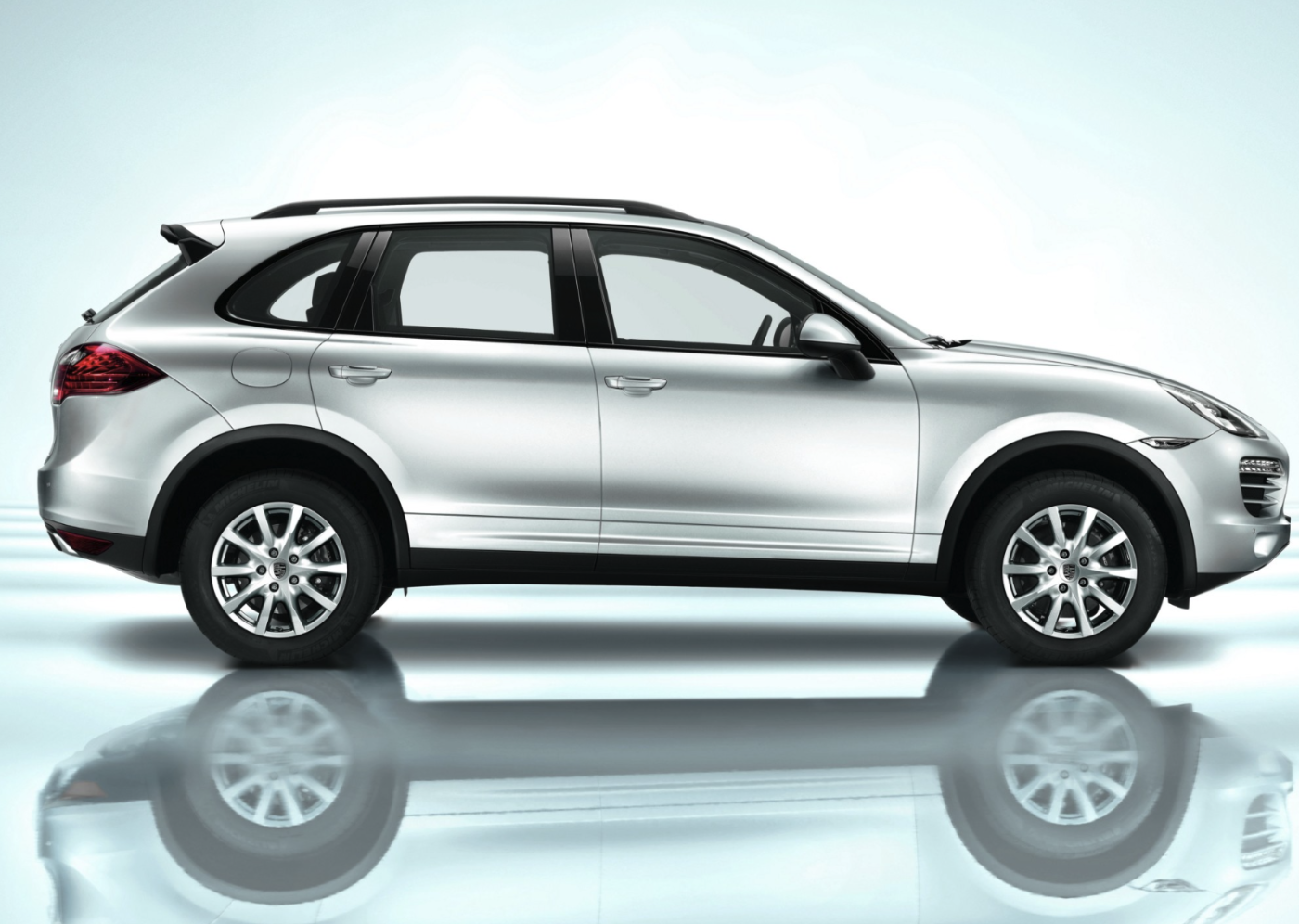
Common 2nd Gen Porsche Cayenne Problems
What Buyers Should Know
While the second-generation Porsche Cayenne (958, 2011–2018) is generally regarded as a more reliable and refined evolution of the original model, it’s still a high-performance luxury SUV, and that means maintenance and repairs can be costly if problems are ignored or if a vehicle hasn’t been properly maintained. As with any used Porsche, a pre-purchase inspection (PPI) is a must. Here are the most common issues 958 Cayenne owners face, and what potential buyers should know before taking the plunge.
1. Transfer Case Failures (Especially 958.2 Models)
One of the most well-known issues with the 958 Cayenne—particularly 2015–2018 models (958.2)—is transfer case failure. Symptoms include jerky or delayed acceleration, slipping at low speeds, or a shuddering feel when pulling away from a stop. This issue stems from internal clutch wear and faulty software that controls power distribution between front and rear axles.
What to know: Porsche issued a warranty extension for some affected models, but not all are covered.
Fix cost: ~$500–$700 for a fluid change and software update (temporary), or $3,000–$4,000 for a new transfer case if needed.
2. Coolant Leaks from Plastic Fittings
Though not as common as in the earlier 955/957 Cayenne V8s, some 958 models still suffer from coolant leaks—typically from plastic crossover pipes, connectors, or water pump housings that degrade over time due to heat cycles.
Symptoms: Visible coolant under the car, low coolant warning, or rising engine temperatures.
Fix cost: ~$1,000–$2,000 depending on the parts involved and accessibility.
3. Oil Leaks (Valve Cover Gaskets, Rear Main Seal)
Like many German V8s and high-performance engines, the Cayenne is known for minor oil leaks as it ages—most commonly from valve cover gaskets, timing covers, or in some cases the rear main seal.
What to know: Valve cover leaks are fairly common and not catastrophic, but they should be addressed to prevent further wear.
Fix cost: $600–$1,500 depending on leak location and engine type.
4. Air Suspension & PASM System Issues (Optional)
Models equipped with air suspension and Porsche Active Suspension Management (PASM) can suffer from air strut leaks, compressor failures, or control module faults as mileage increases.
Symptoms: Car sagging overnight, uneven ride height, “chassis system failure” messages, or slow suspension response.
Fix cost: $1,200–$2,500 per air strut; $1,000+ for a compressor; more if control modules are involved.
5. Electrical Gremlins & PCM Infotainment Glitches
While improved over the first gen, the 958 Cayenne still has occasional electrical issues, including problems with window switches, door modules, power liftgates, and the PCM infotainment system. Early 958.1 models have a slower, less intuitive system, while the 958.2 PCM is much better but not immune to touchscreen lag or Bluetooth connectivity bugs.
Fix cost: Varies greatly—infotainment updates may be free; module replacements can be $300–$800+.
6. Spark Plugs & Ignition Coil Failures
On both V6 and V8 models, ignition coil packs and spark plugs tend to wear out between 60,000–90,000 miles. Misfires, rough idle, and check engine lights are common signs.
Fix cost: $600–$1,000 for a full coil and plug service.
7. Brake and Suspension Wear
Due to the Cayenne’s performance and weight, brake components and suspension bushings wear relatively quickly—especially on Turbo and GTS models driven aggressively.
Symptoms: Clunking, poor braking performance, or uneven tire wear.
Fix cost: Brake jobs can run $1,000–$2,500; control arms and bushings vary depending on model and severity.
Final Thoughts for Buyers
The 958 Cayenne is generally reliable, but not immune to aging European performance vehicle realities. Many issues are manageable and expected in higher-mile luxury SUVs, but neglect or deferred maintenance can be costly. The best approach is to:
Look for a full service history with major maintenance documented.
Prioritize one-owner or enthusiast-owned vehicles over bargain buys with spotty records.
Get a pre-purchase inspection (PPI) from a Porsche specialist—it will often pay for itself tenfold.
If you buy smart and maintain proactively, the 958 Cayenne can deliver years of enjoyable, luxurious, and high-performance motoring with fewer surprises.
Buying A 2nd Gen Porsche Cayenne FAQs
Here are all the questions we've received from readers considering a 2nd Gen Cayenne for their driveway
What are the top five things to look for when buying a 2nd gen Cayenne?
When buying a second-generation Porsche Cayenne (958, 2011–2018), it’s crucial to look beyond just mileage and price. These are complex, high-performance vehicles that require proper care and maintenance. The right example will reward you with a superb driving experience and long-term reliability; the wrong one could lead to expensive surprises. Here are the top five things to look for as an expert would advise:
1. Full Service History & Maintenance Records
Above all else, a comprehensive maintenance record is the most important factor. A well-documented Cayenne tells you the vehicle has been cared for, had scheduled services on time, and had common wear items replaced. Key things to check include: Regular oil changes and scheduled services, transfer case maintenance or replacement, coolant system repairs or updates, brake service and air suspension work (if equipped). Avoid vehicles with gaps in records or vague "just serviced" claims—these SUVs don’t tolerate neglect well.
2. Transfer Case Condition
One of the most common and costly issues with 958 Cayennes, particularly 2015–2018 models, is transfer case failure. These failures can lead to jerky driving, drivetrain slippage, or shuddering at low speeds. Take a slow test drive and feel for any odd hesitations or vibrations. Ask if the transfer case has been serviced or replaced—especially on facelifted 958.2 models. Don't forget to confirm whether the vehicle qualifies for Porsche’s extended transfer case warranty (some were covered up to 7 years/unlimited miles).
3. Air Suspension & PASM Functionality (If Equipped)
Many mid-to-high trim Cayennes (S, GTS, Turbo) came with air suspension and PASM, which dramatically improve ride quality and handling—but are expensive to repair when they fail. Look for any warning lights related to suspension or ride height. Make sure the vehicle raises and lowers properly through all settings. After sitting overnight, the vehicle should not sag or lean to one side.
4. Signs of Electrical or PCM (Infotainment) Issues
While the 958’s electrical systems are more robust than the 955/957, things like power window regulators, liftgate motors, and PCM glitches still crop up. Early PCM units (especially pre-2015) can feel dated and may suffer from lag or limited functionality. Test all electronics—windows, seats, climate, audio, navigation, Bluetooth. Ensure the infotainment system boots quickly and functions without freezing. Make sure the rear liftgate opens smoothly and closes securely.
5. Engine Condition & Common Wear Items
Both the V6 and V8 engines in the 958 are strong performers, but like all high-performance motors, they rely on regular upkeep. Watch for leaks from valve cover gaskets, listen for misfires (especially if ignition coils are overdue), and check for rough idle or CELs. Give the car a cold start and listen for odd noises or excessive ticking. Review the records for recent spark plug and coil replacement (typically needed every 60k–80k miles). Look underneath for oil or coolant residue—especially near the front and sides of the engine.
Pair your inspection with a pre-purchase inspection (PPI) from a Porsche specialist. This will reveal any hidden issues with the drivetrain, suspension, or electronics and give you peace of mind. A clean PPI and solid service history should be non-negotiables—because while the 958 Cayenne is a phenomenal SUV, cutting corners up front can cost thousands later.
Just how important are service records and ownership history?
When it comes to buying a second-generation Porsche Cayenne (958, 2011–2018), service records and ownership history are absolutely critical—arguably just as important as mileage, if not more so. These are high-performance luxury vehicles with sophisticated drivetrains, electronics, and suspension systems. While the 958 is generally more reliable than its predecessor, a clean service history can mean the difference between a dependable daily driver and a costly headache.
Why Service Records Matter So Much
The 958 Cayenne requires regular and proper maintenance to perform as intended. These aren’t vehicles you want to buy if they’ve been neglected or maintained by someone unfamiliar with Porsche systems. A thorough, documented service history tells you critical maintenance (like oil changes, spark plugs, brake service, and coolant system upkeep) has been done on time. It will also tell you whether expensive or failure-prone items—like transfer case service or replacement, air suspension repairs, or coil pack replacements—have been addressed. The vehicle was owned by someone who cared, not just used and tossed aside.
A Porsche without records is a gamble—many deferred issues don’t show symptoms immediately, but can turn into $2,000–$5,000 repairs not long after purchase.
The Value of Ownership History
Ownership history provides context and often tells you more than mileage alone. For example, a 2012 Cayenne S with 110,000 miles but one long-term owner and full Porsche dealer service is far more appealing than a 75,000-mile example that’s bounced between five owners with no clear history. Single or long-term ownership tends to indicate better care, fewer abrupt changes in usage, and usually better record-keeping. Beware of cars with inconsistent ownership or “flipping” patterns, especially if the seller has only owned the car a few months. Regional ownership can matter too—cars from areas with harsh winters or coastal climates may have more wear or corrosion.
Bottom Line
If a seller can’t provide detailed records showing oil changes, major service intervals, and repairs, you should proceed with caution—or use that as leverage to negotiate price and budget for upcoming work. On the flip side, a Cayenne with full documentation, clean Carfax, and known ownership is exactly the kind of vehicle that holds value, drives better, and gives peace of mind. In short, service records and ownership history aren't just nice to have—they're essential tools in evaluating whether a 958 Cayenne is worth buying. Without them, you're buying blind. With them, you're investing smart.
What are the most sought after 2nd Gen Porsche Cayenne variants?
The second-generation Porsche Cayenne (958, 2011–2018) came in a wide variety of trims and powertrains, ranging from practical daily drivers to high-performance SUVs that rival sports cars. While all models offer Porsche’s signature blend of luxury and performance, a few specific variants have become especially sought after by enthusiasts and collectors—thanks to their performance credentials, rarity, or unique features. Here’s a breakdown of the most desirable 958 Cayenne models:
1. Cayenne GTS (958.1, 2013–2014) – The Enthusiast’s Choice
The 958.1 GTS, offered before the facelift, is often considered the “sweet spot” of the entire generation. It was the last Cayenne GTS to feature the naturally aspirated 4.8L V8, tuned to produce 420 hp, and it came standard with Porsche Active Suspension Management (PASM), a lower sport suspension, unique body styling, and a sonorous sport exhaust. The V8’s character, sound, and responsiveness offer an analog, visceral feel that newer turbocharged models can’t replicate. The other benefit of course is that tt offers nearly Turbo-level engagement without the added complexity or cost.
2. Cayenne Turbo S (958.2, 2016–2018) – The Flagship Super SUV
The 958.2 Turbo S is the most powerful and exclusive model of the second-gen Cayenne range. With a 4.8L twin-turbo V8 producing 570 hp, 0–60 mph happens in a staggering 3.8 seconds, making it one of the quickest SUVs of its era. It also came with Porsche Carbon Ceramic Brakes (PCCB), torque vectoring, PDCC (active anti-roll control), and nearly every available luxury and tech feature as standard. It’s the ultimate expression of Porsche performance in SUV form—blisteringly fast, rare, and loaded with top-tier tech. Collectors love it for being the last Turbo S before the Cayenne moved to a V6 hybrid platform in the 3rd generation.
3. Cayenne S Diesel (Europe & Limited U.S. Market)
While not offered in the U.S. for long due to Dieselgate, the Cayenne S Diesel (especially in Europe) is a bit of a cult classic. Its 4.2L twin-turbo V8 diesel delivers 850 Nm (627 lb-ft) of torque and a surprising amount of real-world performance. Excellent fuel economy, loads of torque, and the durability of a V8 diesel make it an ideal long-distance grand tourer. Rarity and the demise of diesel engines make this a niche favorite among Porsche fans in Europe.
4. Cayenne S E-Hybrid (958.2, 2015–2018) – The Green Performance Play
The S E-Hybrid introduced plug-in capability to the Cayenne lineup, combining a supercharged 3.0L V6 with an electric motor for 416 combined hp. With modest electric-only range and strong torque, it offered a compelling mix of efficiency and performance. For buyers in cities with emissions restrictions or who want a more future-proof option, the E-Hybrid hits a sweet spot. It may also be eligible for some incentives in certain regions, and still carries Porsche driving dynamics.
5. Special Editions & Highly Optioned Platinum Editions
Toward the end of the 958’s life cycle, Porsche offered Platinum Edition trims, which bundled many popular options—like navigation, Bose audio, panoramic roof, and upgraded wheels—into a more affordable package. Though not performance standouts, these models represent great value and are in demand among luxury-focused buyers. Attractive packages, exclusive trim details, and lower pricing make them practical and stylish daily drivers. Many Platinum Editions are well-maintained lease returns or single-owner examples.
If you’re looking for maximum performance and future collectibility, go for the Turbo S or the V8-powered 958.1 GTS. If you want balance and long-distance usability, the Diesel and S E-Hybrid offer unique, torque-rich alternatives. And for those who want a stylish, well-equipped Porsche SUV without chasing peak performance, highly optioned Platinum Editions and low-mileage Cayenne S models are excellent choices.
What are the best 2nd Gen Porsche Cayenne options?
When shopping for a second-generation Porsche Cayenne (958, 2011–2018), understanding which options and extras truly elevate the ownership experience—and long-term value—is essential. Porsche’s famously à la carte ordering system means no two Cayennes are exactly alike, and while some options are purely cosmetic, others enhance performance, comfort, and resale desirability in meaningful ways. As an expert, here are the most valuable and sought-after factory options and packages to look for:
1. Air Suspension with PASM (Porsche Active Suspension Management)
This is one of the most impactful upgrades on the 958 Cayenne. It allows for adjustable ride height and variable damping, giving you the flexibility to choose between comfort and sportiness depending on your driving needs. It matters, because it enhances both ride quality and handling, especially in performance models like the GTS and Turbo. Essential for off-roading or towing, and improves the Cayenne’s overall poise.
2. Sport Chrono Package
This performance package adds a dash-mounted stopwatch, sport and sport-plus drive modes, and sometimes launch control (on Turbo/Turbo S). It also adjusts throttle response and shift patterns for sharper performance. It transforms how the car behaves when you’re driving enthusiastically and is a must-have on GTS, Turbo, and S variants. It also adds a bit of future collectibility, especially for enthusiasts.
3. Porsche Torque Vectoring (PTV) / Porsche Dynamic Chassis Control (PDCC)
These high-end dynamic systems enhance cornering stability and performance by actively managing power distribution and body roll. PDCC is a hydraulic anti-roll system that keeps the Cayenne flat through corners. It noticeably sharpens handling; highly desirable on GTS and Turbo S. Note, that it is often bundled with air suspension and Sport Chrono which a nice bonus.
4. Premium Plus Package
This popular package bundles several luxury features into one, including: Panoramic sunroof, keyless entry/drive, heated and ventilated front seats and power rear sunshades (on some trims). It greatly improves day-to-day comfort and cabin ambiance and boosts resale value—many buyers specifically seek out this package.
5. Upgraded Sound System (BOSE or Burmester)
Most Cayennes came with decent standard audio, but the BOSE Surround Sound system is a major step up, and the Burmester High-End system (rare and expensive) delivers exceptional quality. Premium sound is a highly noticeable and desirable everyday luxury and the higher end stereo systems are meaningfully better than stock units.
6. Adaptive Cruise Control & Lane Keep Assist (Safety Options)
Advanced driver assistance systems were available, especially in later 958.2 models, including adaptive cruise control, lane departure warning, blind spot monitoring, and 360-degree cameras. Modern buyers often expect these features in luxury vehicles and they make long-distance driving more relaxing and safer.
7. Tow Package with Trailer Stability Management
The 958 Cayenne is rated to tow up to 7,700 lbs, but only if it came with the factory tow package, which includes a hidden trailer hitch, wiring harness and module and stability software calibration. It is critical for towing; adds utility and resale value and the factory setup is far more integrated than aftermarket hitches.
8. SportDesign Package or Exterior Styling Upgrades
This includes sportier bumpers, side skirts, blacked-out trim, and model-specific touches like GTS badging, wheels, or exhaust tips. It gives the Cayenne a much more aggressive presence. It has strong visual appeal and often signals a more enthusiast-oriented spec.
9. Unique Color Combos and Interior Trims
Cayennes with special paint colors (e.g., Carmine Red, Jet Green, Purpurite, or Paint-to-Sample) or two-tone leather interiors tend to stand out from the typical black, silver, and white examples. Alcantara headliners, carbon fiber or wood trim, and deviated stitching also enhance cabin appeal. Makes the vehicle more unique and collectible.
The most desirable 958 Cayennes tend to be well-optioned GTS, Turbo, or S models equipped with air suspension, Sport Chrono, Premium Plus, and driver assistance features. Rare exterior colors and factory tow packages can add utility and uniqueness, while premium audio and sport styling packages round out the experience.
In short, the right options can elevate a good Cayenne into a great one—both in terms of ownership satisfaction and long-term value. When buying used, seek out examples that were clearly spec’d with intent, not just the base model with minimal features.


